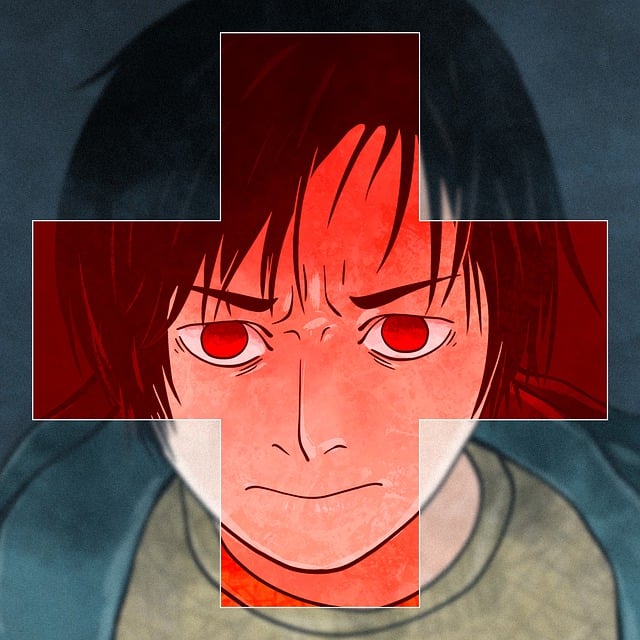TL;DR:
Post-traumatic stress disorder (PTSD) is a mental health issue triggered by traumatic events, characterized by avoidance behaviors, re-experiencing, and hyperarousal. Cognitive Processing Therapy (CPT), an effective PTSD treatment, targets maladaptive thinking patterns by challenging negative thoughts and beliefs shaped by trauma. This therapy promotes healthier memory integration, reduces symptoms, and improves daily functioning, ultimately enhancing quality of life. CPT combines education, detailed recounting of trauma, reframing distorted reactions, and encouraging adaptive thought patterns to manage symptoms like flashbacks. It's effective, but side effects may include increased anxiety or depression. Integrating CPT with exposure therapy and mindfulness practices yields better outcomes. With qualified professionals readily available, both online and in community settings, CPT for PTSD is becoming more accessible, backed by growing research and technological advancements.
Cognitive Processing Therapy (CPT) is a revolutionary approach in PTSD treatment, offering a path to healing for those who have experienced traumatic events. This article delves into the comprehensive world of CPT, exploring its effectiveness in addressing post-traumatic stress disorder. From understanding the mental health perspective of PTSD to uncovering the power of cognitive processing, we provide a step-by-step guide and real-life success stories. Learn about the benefits, potential challenges, and how CPT can be integrated with other therapeutic methods. Access valuable resources and discover the future prospects of this transformative therapy.
Understanding PTSD: A Mental Health Perspective

Post-traumatic stress disorder (PTSD) is a complex mental health condition that arises from exposure to traumatic events, such as war, natural disasters, or severe accidents. From a cognitive processing perspective, PTSD involves maladaptive thinking patterns and memories that keep the individual trapped in a cycle of reliving and avoiding trauma-related stimuli. These symptoms can significantly impact daily functioning, causing chronic stress, anxiety, depression, and nightmares.
Cognitive Processing Therapy (CPT) is a well-regarded PTSD treatment approach. It focuses on identifying and challenging negative thoughts and beliefs associated with the traumatic event(s). By modifying these cognitive distortions, CPT aims to reduce avoidance behaviors and help individuals process and integrate their traumatic memories in a healthier way. This therapy encourages individuals to confront and reframe their experiences, offering a path towards healing and improved quality of life.
The Role of Cognitive Processing in Healing

Cognitive processing plays a pivotal role in healing from Post-Traumatic Stress Disorder (PTSD). This therapy focuses on challenging and modifying negative thought patterns and beliefs that have developed as a result of traumatic experiences. By identifying and changing distorted cognitions, individuals can reduce the intensity and frequency of PTSD symptoms. This process involves understanding how trauma has influenced one’s thinking and perception, which in turn empowers them to gain control over their emotional responses.
In PTSD treatment, cognitive processing helps individuals reframe their interpretations of traumatic events, fostering a more balanced and realistic view. It encourages critical examination of thoughts and feelings associated with the trauma, enabling people to separate factual memories from exaggerated or unhelpful interpretations. This cognitive restructuring is a powerful tool in managing symptoms like avoidance, re-experiencing, and hyperarousal, ultimately paving the way for long-term recovery and improved quality of life.
How CPT Works: Step-by-Step Guide

Cognitive Processing Therapy (CPT) is a structured and goal-oriented psychotherapy approach designed to help individuals recover from post-traumatic stress disorder (PTSD). The therapy works by guiding patients through a step-by-step process to identify, challenge, and change unhelpful thought patterns and beliefs that have developed as a result of trauma.
The CPT process typically begins with education about the nature of PTSD and the impact of traumatic events. Patients are then encouraged to recount their traumatic experience in detail, identifying specific thoughts, feelings, and physical sensations associated with it. Next, the therapist helps the patient understand how these reactions may be distorted or unhelpful and introduces alternative, more balanced ways of interpreting the event. Through this process, patients learn to modify their cognitive responses, leading to reduced symptoms of PTSD over time. This step-by-step guide allows for a structured and effective approach to PTSD treatment, helping individuals regain control and improve their overall well-being.
Benefits and Success Stories of CPT Therapy

Cognitive Processing Therapy (CPT) for PTSD offers a powerful and effective approach to healing. One of its key benefits is that it empowers individuals to challenge and reframe distressing memories, leading to reduced symptoms over time. This therapy helps patients understand how their thoughts and beliefs contribute to their emotional reactions, encouraging them to replace negative thought patterns with more adaptive ones.
Success stories abound in the realm of CPT therapy. Many individuals who have struggled with PTSD for years report significant improvements after completing this treatment. They share personal testimonies of feeling less overwhelmed by traumatic memories, experiencing fewer flashbacks, and enjoying improved quality of life. CPT has been particularly successful in treating war veterans, helping them navigate and overcome the psychological scars of their experiences on the battlefield.
Common Challenges and Side Effects

Common Challenges and Side Effects
One of the primary challenges in treating PTSD is the complex nature of the condition itself, often characterized by intrusive memories, avoidance behaviors, negative changes in thinking and mood, and heightened arousal. Cognitive Processing Therapy (CPT) directly addresses these symptoms, but individuals may face difficulties throughout the treatment process. For instance, facing traumatic memories can be intensely distressing, leading to potential side effects like increased anxiety, depression, or even physical discomfort.
Another challenge lies in the individual’s readiness to engage in therapy. Many people with PTSD might have difficulty trusting their therapist or feeling safe enough to confront their past experiences. Additionally, the pace of treatment can vary; some individuals may progress quickly, while others might struggle with certain aspects, requiring more time and support. Effective management of these challenges often involves a tailored approach, close monitoring by therapists, and strategies to help clients cope with potential setbacks during their PTSD treatment journey.
Integrating CPT with Other Treatment Methods

Integrating Cognitive Processing Therapy (CPT) with other treatment methods has shown significant promise in enhancing PTSD treatment outcomes. This approach, often employed alongside exposure therapy and mindfulness practices, offers a comprehensive strategy to address the complex nature of post-traumatic stress disorder. By combining these techniques, therapists can tailor interventions to individual needs, ensuring a more effective and personalised care plan.
CPT focuses on identifying and modifying unhelpful cognitive patterns that contribute to PTSD symptoms. When integrated with exposure therapy, individuals gradually confront traumatic memories in a safe environment, helping them process and manage intense emotions. Mindfulness practices complement this by teaching individuals to stay present and accept their experiences without judgment, fostering resilience against distressing thoughts and feelings associated with PTSD.
Accessing CPT: Resources and Support

Accessing Cognitive Processing Therapy (CPT) for PTSD involves finding qualified mental health professionals who specialize in this evidence-based approach. Many therapists offer CPT as part of their practice, and it’s increasingly available through online platforms, making it more accessible than ever. Starting with a referral from your primary care physician or a trusted mental health organization can be a good first step.
Additionally, many community clinics, veterans’ affairs centers, and non-profit organizations provide PTSD treatment, including CPT, at reduced costs or on a sliding scale. These resources ensure that individuals who may not have insurance coverage or face financial barriers can still access effective care. Online support groups and educational resources are also available to complement therapy sessions and empower individuals in their healing journey.
Looking Ahead: Future of Cognitive Processing Therapy

As research continues to evolve, Cognitive Processing Therapy (CPT) for PTSD is poised for an even brighter future. Emerging evidence suggests that CPT can be effectively adapted and delivered in various settings, making it a more accessible and flexible option for those seeking PTSD treatment. Technological advancements are also opening new doors; digital platforms and mobile apps are being developed to support the therapy process, offering remote access to CPT techniques and potentially expanding reach and convenience.
Furthermore, integration of CPT with other evidence-based therapies is an exciting prospect. Combining CPT with mindfulness practices, exposure therapy, or eye movement desensitization and reprocessing (EMDR) could enhance its effectiveness in treating complex trauma. With ongoing study and innovation, CPT’s role in the PTSD treatment landscape is set to grow, promising improved outcomes for individuals navigating the challenges of post-traumatic stress disorder.
